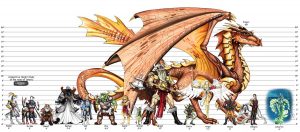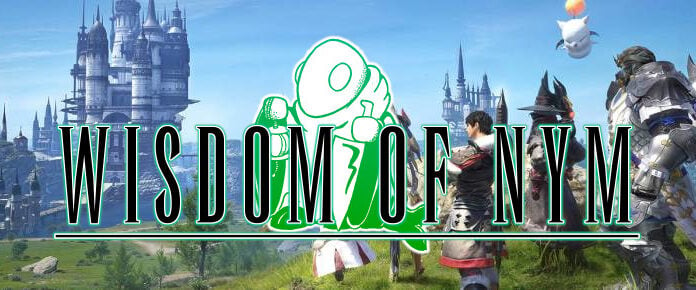
I have a problem: As much as I enjoy games, I can see that many online and multiplayer games are becoming designed more poorly in order to sell themselves as a service, and they’re getting better at the selling part without necessarily being worthy of it. With the latter, I’m fine buying DLC or paying a monthly subscription fee for monthly content. That seems fair. But when a system immediately feels grindy or broken, and the solution is an item in the cash shop, it’s a huge turn-off. It’s not a recent issue either, just one that seems to be coming up more and more. And it’s affecting not just me but the game communities I’m a part of, both in-guild and in the overall queuing population.
Modern games, especially with gacha mechanics, may have poor game design, but I’d argue it’s often due to profitable complementary monetization designs. It’s not just predatory; it also kills creativity.
Let’s start simple and focus on games with a cash shop that focuses on loot. Even in shops selling only cosmetic items, if the pursuit of loot can be skipped with a shop purchase, that is potentially less time in-game for said player if that item had been a drop. For a single-player game, only that player is affected, but if that player is in a kind of community – either among real-life acquaintances or in-game guilds – then skipping the play feature affects others, possibly giving them one fewer person to group with.
While I’d argue that MMOs with fuller features may not suffer as much from this sort of thing, a more loot-centric game such as Monster Hunter can feel empty faster if the playerbase simply purchases cosmetics. I’ve noticed the MHRise, which previous series entries granted fun cosmetics to craft, has more one-and-done events. In two months, players have received a grand total of one new equippable item (not emotes or stickers, which I have never used to date or seen fellow players use). The paid DLC cosmetics, however, are quite bountiful with each new update.
That may not sound like a big deal, but I was curiously surprised at how difficult it was to find players on MHR 3.0’s release night for the new true ending boss. The boss is not only difficult but much more rewarding than I expected on a loot/stat basis. The 2.0 release and other event quests rarely required any kind of wait for my partner and me; people would be placed in our quest with us almost immediately. The same was not true for the 3.0 release. To be honest, I know one of the reasons I’ve been playing the game as much as I have is for social purposes, not to chase loot. People I know who tend to solo queue leave the game quite quickly after they get their loot. But I thought, perhaps, this would bring people back.
What the cash shop does is add additional content for a price – sometimes items that cannot be earned with traditional means – and gives that money to the developer. While games aren’t free, granting that content also takes away motivation to play. It may not be a lot depending on the player and game, but that’s exactly what it does. Even though some players can simply pay for the new item, players who already paid full box price may not want to pay additional charges for new items.
This isn’t quite the same as an expansion, but has a similar effect: Those who cannot pay cannot access it, and if you’re in a group setting where someone cannot pay the price of admission, you may be less likely to participate. Even worse, though, is when a large portion of the community cannot afford the enter the content, and since MMOs in particular rely on large numbers of participants to achieve a feeling of massiveness, reducing the number of potential players threatens the game itself.
Making cash shop items also earnable in-game seems like a reasonable compromise but again that threatens the active playerbase by giving rewards without actually requiring participating in the game. It may motivate some players, but as Capcom hasn’t done this, it feels like Capcom has taken out some loot for us to pursue and locked it behind a paywall some players simply ignore and move on from, abandoning both the game and the communities within. But this is one of the simpler examples.
I won’t even go to an extremely bad model, such as basically every gacha-game out there making artificially “rare” drops statistically required for players to even begin to be competitive, though the Mario-Kart-that-should-not-be-named would be a good example of this. No, I don’t have to do that – because I can go to Star Wars: The Old Republic’s free-to-play model.
Even though SWTOR has eased its restrictions on non-subscribers over the years, the initial release of free-to-play for the game was incredibly painful: limiting action bars, the credit cap, storage, auctions, chat, mail, the number of PvP Warzones and PvE Operations one could participate in… the F2P version was incredibly limited even as a basic MMO. You could individually buy full(er) access to those options or just subscribe. The latter option was easier, but the former was tempting and still painful.
Let’s take a single design choice: limiting hotbars. While more modern, action-based MMOs often try to keep things simple, we all know our MMOs give us a glut of moves that have to be used at some point in our gaming career, and unless you’ve outgrown the content, missing that button could result in a death, wipe, or other situation that could cause the user frustration (and probably groupmates as well).
That’s without considering assigning things like mounts, recalls, target assignments, or crafting tools/recipes to hotbars. For most MMOs, if you showed a game dev an MMO intentionally designed to have lots of required action buttons but not enough space to put them all, unless they were very kind and thought you could explain your design choice, they’d tell you to either drop or merge redundant skills to make them fit better or add more bars. However, anyone specifically looking at how to monetize the game would see it’s a smart way to encourage people to increase their spending.
And I know plenty of people this trick worked on yet still ultimately quit the game – including me. That’s a clear example of bad game design with successful monetization. I’ve struggled to find a good term for this, but with some help, we could use Dr. Steven Conway’s wording to describe it as profit-driven contra-ludicity, or possibly hypo-ludicity. The contra-ludicity is the game against the player, while hypo-ludicity is described as the game essentially playing itself (like auto-running pathways in mobile MMOs).
Contra-ludicity in and of itself isn’t bad, as increasing the game challenge is a basic part of game design. When that increase, however, is used to create opportunities to sell a product, it becomes predatory, especially if that challenge hamstrings basic gameplay, such as with our SWTOR hotbar example. Similarly, when you have the option to earn an item in game or simply purchase it, it creates a kind of hypo-ludic situation in which the game simply grants the item you would be playing to earn.
 But even games that feel pretty fair can abuse these mechanics. I’ve mentioned how when Pokemon Go’s Mega Evolution first came out, it was a disaster. Players were angry, and I’d argue many still are. I’m overly simplifying things, but essentially Niantic took a mechanic that was associated with ownership and instead tied it to rentals. Unlike pokemon you had to raid to own though, most “rentals” essentially “cost” three to four times more than a single pokemon did previously, and they were yours for only a few hours.
But even games that feel pretty fair can abuse these mechanics. I’ve mentioned how when Pokemon Go’s Mega Evolution first came out, it was a disaster. Players were angry, and I’d argue many still are. I’m overly simplifying things, but essentially Niantic took a mechanic that was associated with ownership and instead tied it to rentals. Unlike pokemon you had to raid to own though, most “rentals” essentially “cost” three to four times more than a single pokemon did previously, and they were yours for only a few hours.
Niantic’s solution? Again I’m oversimplifying things, but it was to lump in a way to earn the rentals with the Buddy System, a system that currently juggles six different features, three of which are different resource gains and many of which don’t necessarily complement each other. Niantic has also attached quests to the feature that break the normal rhythm of pairing up a buddy and walking it to gain your bonuses, pushing players to cycle through their buddy’s quick non-walking reputation gains in the pursuit of rewards, defeating both the overall ideal of “buddies” but also the core walking experience the game is supposed to promote.
There is a way to ignore this clunky feature, though: either pay for additional cash shop items to earn/gain items to bypass the pain, or in the case of the premium item “Poffins,” send recorded AR tracking to Niantic (think Google Street view work, but paid with in-game items) to make stuff Niantic really hasn’t discussed with us, despite our attempts to get answers.
If developers want more money from us, I’d argue we should be paying for game experiences, not game rewards. At the same time, though, when we pay for an experience, it should be one that adds to the game, not one that simply makes it less painful to play.
 One of the major reasons I haven’t felt like paying an MMO subscription fee in years has been that I don’t believe many games that ask for a monthly payment give me content worthy of that money. I’ve said this several times, but my early MMOs – the Asheron’s Call series and Istaria/Horizons – gave me actual monthly content like new stories, dungeons, landmasses, player events, and even player races and abilities, all stuff that most companies lock into their expansions. SWTOR had been one of the few that initially seemed worth it until the story-based content I wanted was gated behind raids most casuals were a liability in, changing what felt like a social-story-based game into a hardcore raiding game with a story attached to it.
One of the major reasons I haven’t felt like paying an MMO subscription fee in years has been that I don’t believe many games that ask for a monthly payment give me content worthy of that money. I’ve said this several times, but my early MMOs – the Asheron’s Call series and Istaria/Horizons – gave me actual monthly content like new stories, dungeons, landmasses, player events, and even player races and abilities, all stuff that most companies lock into their expansions. SWTOR had been one of the few that initially seemed worth it until the story-based content I wanted was gated behind raids most casuals were a liability in, changing what felt like a social-story-based game into a hardcore raiding game with a story attached to it.
I still give BioWare and SWTOR some credit for at least initially attempting something new. It was a good try. I think the failure landed more on audience expectations vs. trying to make new content follow the traditional MMO recipe hardcore-raiding-obsessed devs have pursued for decades now.
But profit-driven contra-lucidity killed my desire to go back, even when it sounded like the company may have done some cool story things. Many players, not just for SWTOR but other titles, are willing to pay, but when the challenge is based-off of pain-ratcheting to determine at what point I’ll open my wallet, my choice is often to leave the game entirely.
I know game development costs money, but as games either thinly disguise gambling to avoid gambling laws or ask me to pay for the game to play itself, the genre becomes less a game and more a virtual casino/store with a chatroom. Maybe it won’t make piles of money, but game companies should let devs make good games first and use their money to continue to delight and surprise players, not nickel and dime them. I want to play games and explore virtual worlds, not go to the virtual mall to show off my new purchases.
With special thanks to Josh Zimmerman for terminology and resource assistance.
 Everyone has opinions, and The Soapbox is how we indulge ours. Join the Massively OP writers as we take turns atop our very own soapbox to deliver unfettered editorials a bit outside our normal purviews (and not necessarily shared across the staff). Think we’re spot on — or out of our minds? Let us know in the comments!
Everyone has opinions, and The Soapbox is how we indulge ours. Join the Massively OP writers as we take turns atop our very own soapbox to deliver unfettered editorials a bit outside our normal purviews (and not necessarily shared across the staff). Think we’re spot on — or out of our minds? Let us know in the comments!
















